Alicante Tomatoes – Pros, Cons And Growing Tips For This Award-Winning Variety
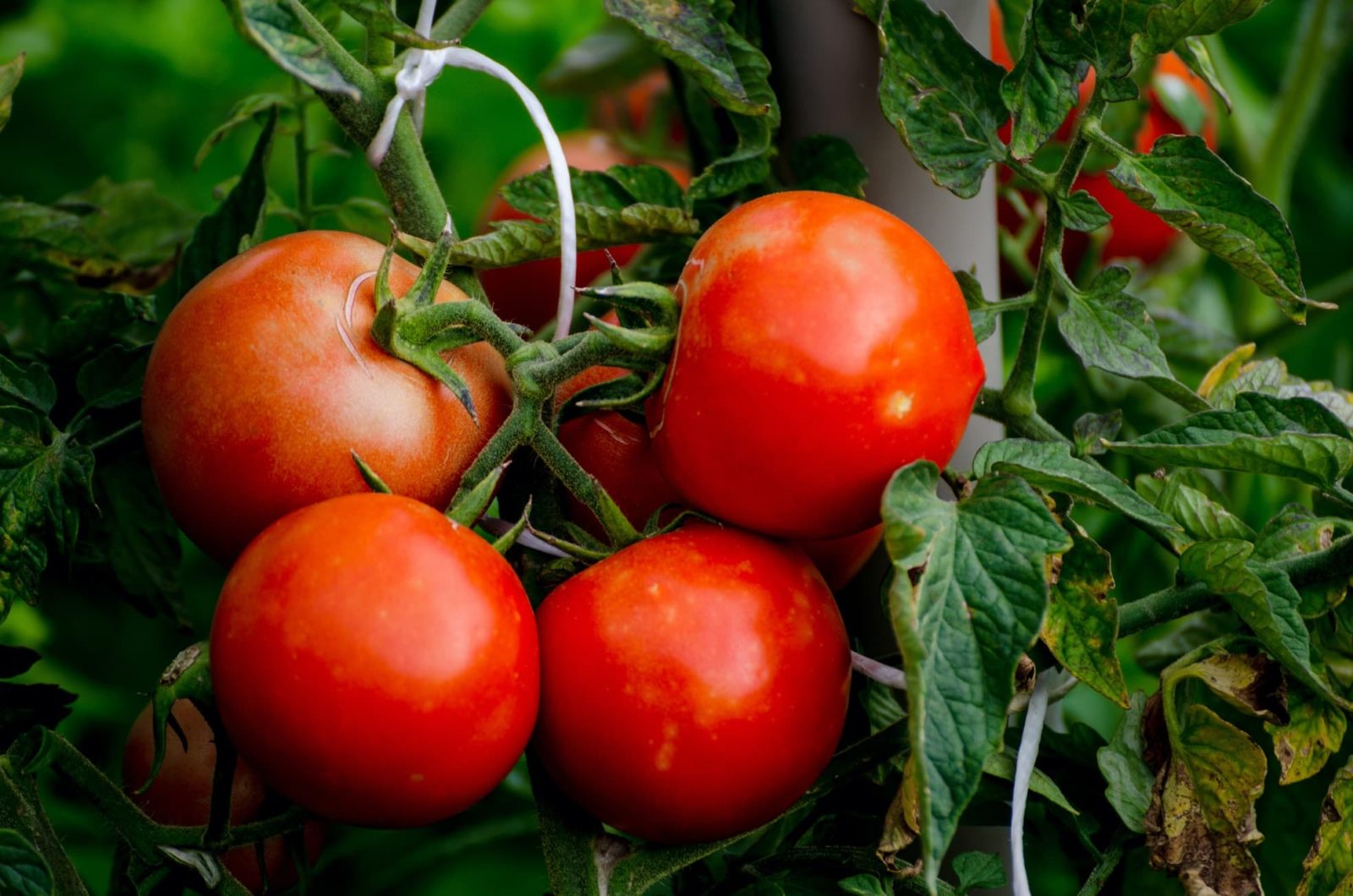

Elizabeth is a Permaculture Garden Designer, Sustainability Consultant and Professional Writer, working as an advocate for positive change. She graduated from the University of St. Andrews with an MA in English and Philosophy and obtained a Diploma in Applied Permaculture Design from the Permaculture Association.
Reviewed By DAN ORI

Dan has over 27 years’ under his belt caring for plants and gardens. Working as a Horticultural Instructor and Consultant, he draws on a diverse range of experience that includes working as a Head Gardener, Tree Surgeon, Garden Centre Trouble Shooter, and writer of academic papers. Dan has a Level 3 Diploma in Horticulture and is currently a candidate for the RHS’s most prestigious award – The Master of Horticulture.
IN THIS GUIDE
TOMATO GUIDES
Disposal
Feeding
Growing From Seed
Growing In Hanging Baskets
Harvesting
Problems
– Not Setting Fruit
Pruning
Yellow / Orange Varieties
– Roma
– Sungold
– Alicante
– Moneymaker
– Gardeners Delight
Alicante tomatoes are one of the most common tomato varieties grown by home gardeners.
But are they the right variety for you? We delve a little deeper and take a look at this particular cultivar and its characteristics.
Alicante tomatoes are a popular red tomato variety – the fruits are produced relatively abundantly and are deep red, and mid-sized.
They have a typical, traditional tomato taste and texture and are considered to be relatively sweet.
Overview
| Botanical Name | Solanum lycopersicum ‘Alicante’ |
| Common Name(s) | Alicante Tomato |
| Plant Type | Fruit |
| Native Area | Cultivated |
| Hardiness Rating | H1C |
| Foliage | Tomato vines – slight differences depending on cultivar |
| Flowers | Yellow |
| When To Sow Indoors | January, February, March, April |
| When To Plant Out | May, June |
| Harvesting Months | June, July, August, September, October |
| When To Prune | July, August, September |
Sunlight
Preferred
Full Sun
Exposure
Sheltered
Size
Height
Up to 1.4M
Spread
Typically cordoned
Bloom Time
June – September
Soil
Preferred
Fertile loam is ideal
Moisture
Moist but well drained
pH
Neutral / Mildly Acidic
These tomatoes have been awarded with an RHS Award of Garden Merit.
They are regarded as a superior variety upon which gardeners experienced and novice can depend.

Alicante tomatoes are cordon-type tomato plants, which means that they are best grown as a cordon, on support structures.
They can grow up to around 2m in height, with a spread of around 50cm.
‘Alicante’ Pros
- They tend to germinate and crop fairly reliably, even for those who are not necessarily the most experienced or green-fingered of gardeners.
- This tomato variety can be grown in a greenhouse or polytunnel, or outdoors in a suitable spot.
- This is an affordable option, typically these seeds are cheaper to purchase than F1 seeds.
- It is easy to get hold of seeds or plants for this variety wherever you live in the UK, since this is such a common variety.
- And as an open-pollinated variety, you can save seeds from your Alicante tomatoes and won’t necessarily have to buy more seeds next year.
- These particular tomatoes taste good, and have a good texture. They can be used raw or cooked in a range of different ways and are a multi-purpose tomato type, unlike other tomatoes which are usually only used in specific ways.
‘Alicante’ Cons
- Like many other tomato varieties, ‘Alicante’ is not blight resistant and can succumb to this fungal disease and encounter a range of other problems (F1 options can sometimes have greater resistance).
- Since this is a very common variety, it might not be as interesting or fun to grow as more unusual heritage tomato varieties. It does not differ as dramatically from store-bought tomatoes as some other varieties you could try.
- As this is a cordon type, it requires a support structure, and a little more work is involved than with a bush type.
- While they are a relatively early cropping variety, there are varieties which will more reliably produce a yield for areas with a shorter growing season.
How To Grow ‘Alicante’
‘Alicante’ seeds are ubiquitous here in the UK and you should have no trouble getting hold of some seeds.
Here are some I grew recently:

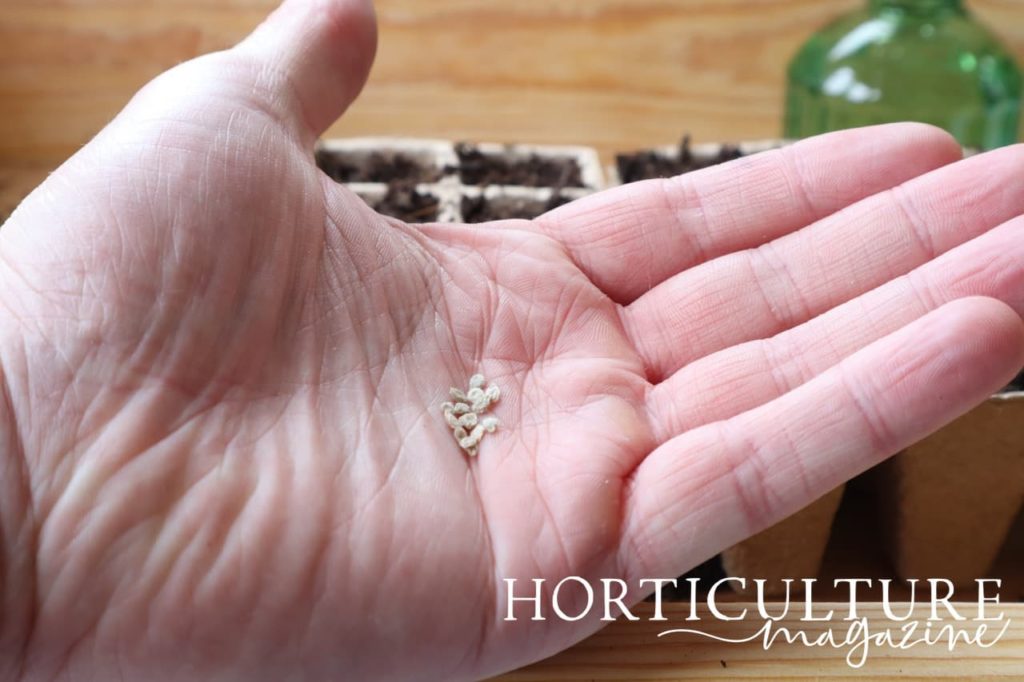
If you have left it too late and would still like to grow tomatoes this year, you can also fairly easily find pot-grown Alicante tomato plants from local garden centres or online.
Where To Grow

As mentioned above, one of the good things about this variety is that they can be grown in a greenhouse or polytunnel, or outdoors in a sunny and sheltered spot.
Note that while cordon tomatoes can be grown in containers, this vigorous and tall variety does not necessarily lend itself to small-scale container growing.
However, it can be grown in grow bags or other containers below a support structure so the plants can be cordoned as they grow.
Growing From Seed
Alicante tomatoes, like other tomato varieties, are typically sown in late winter or early spring.
Usually, they are sown between February and April in the UK.
I like to grow mine in compostable seed trays, which I place in my heated propagator:
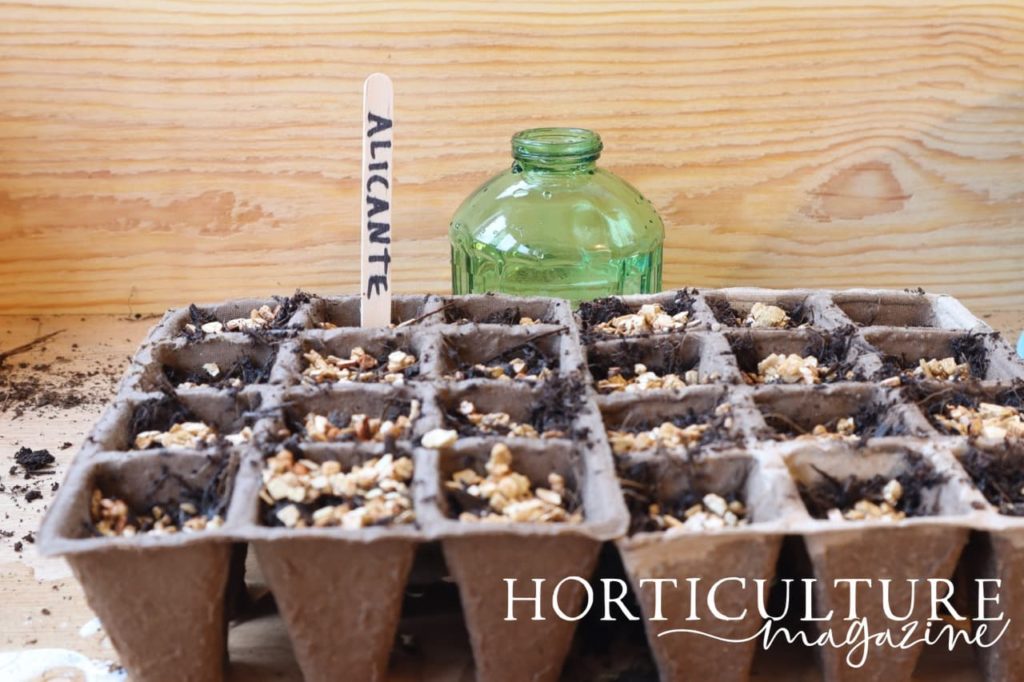
As mentioned above, for those who have not yet sown tomatoes this year, there is the option of choosing pot-grown starter plants.
This can also be an option where it is difficult for you to sow seeds indoors before the last frost date in your area.
‘Alicante’ Plant Care
Cordon Support
While some ‘cordon tomatoes’ do not necessarily absolutely have to be grown in this way, I have grown Alicante tomatoes as cordon plants, and without cordoning and I would definitely say that from my experience, cordoning does definitely yield the best results for this heritage tomato variety.
Cordoning simply involves tying in the plant to a string, wire or stake as they grow, and pinching off side shoots to focus on one central leader.
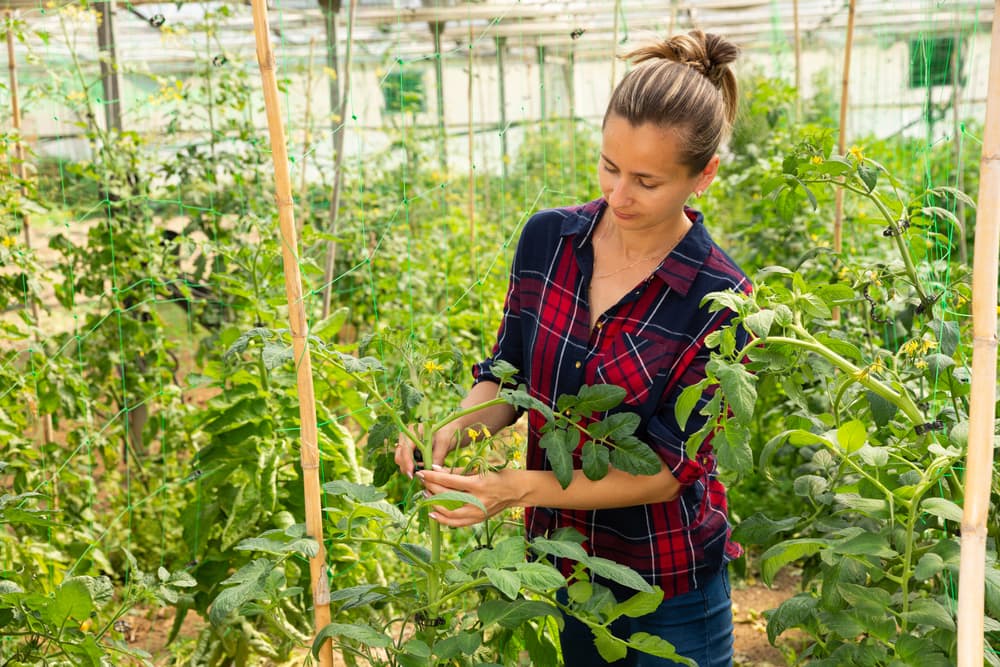
I grow Alicante tomatoes in my polytunnel some years, and have lengths of wire between the crop bars.
I tie jute twine to these wires, and tie in the tomatoes to these lengths of twine as they grow.
Planting Out
When planting out Alicante tomato plants, bury each one a little deeper in the soil than it was in its pot.
This also encourages stronger root systems, which is especially important for cordoned tomato plants.
Make sure you harden off tomatoes grown indoors, and keep an eye on the weather.
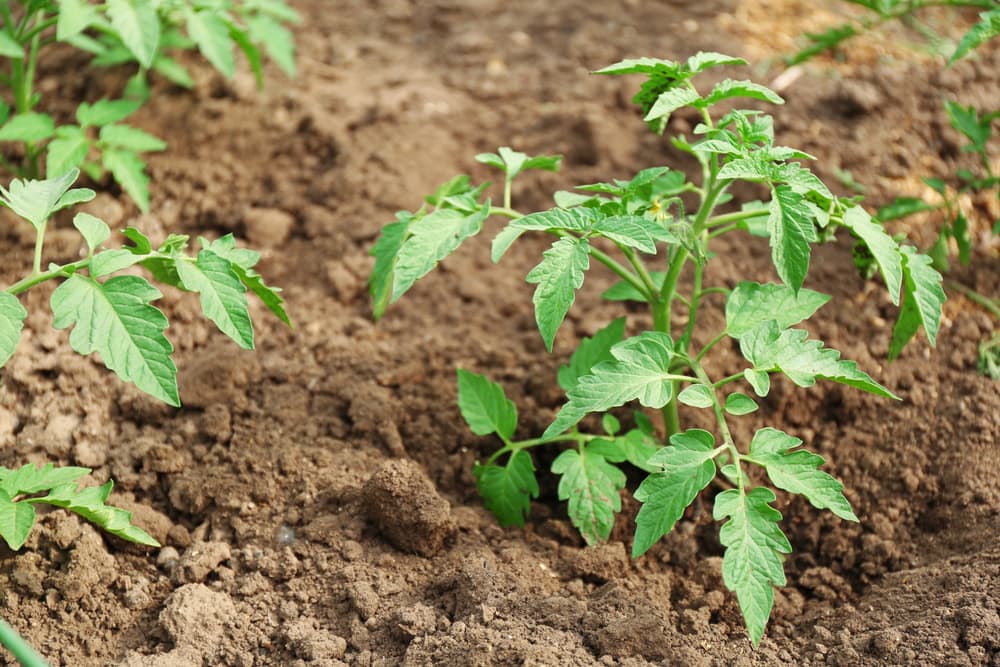
Only plant out once the weather has reliably warmed and there is no longer any risk of frost.
Watering
As with other tomatoes, it is important to make sure that you water deeply and less frequently, rather than little and often.
This encourages the plants to form stronger and deeper root systems.
Make sure that you water at the base of the plant, rather than watering from above.
While for some years, late blight cannot be avoided, reducing the wetting of foliage can reduce the chances of a severe blight infestation taking hold.
“Care should be taken with this approach because if you under-water or water tomatoes inconsistently during flower and fruit formation it can result in the skin splitting or blossom end rot making your tomatoes inedible,” shares Master Horticulturist Dan Ori.
“I would normally expect to water indoor and outdoor tomatoes daily during summer in the southeast of England.
“Getting the watering balance right is a matter of trial and error. If you can afford to try a few different approaches to watering frequency and amount of water on different beds and containers I recommend it, as this will help you to understand what gets you the best harvests.”
Feeding
Alicante tomatoes are a vigorous variety and tomatoes are pretty ‘hungry’ plants – make sure you have provided them with fertile growing conditions.
I tend to mulch newly planted tomatoes with comfrey leaves and other potassium-rich dynamic accumulator plants like Chenopodium album (Lambsquarters / Fat Hen).

I also feed the tomato plants with a comfrey liquid feed during flowering, and again once the fruits have begun to form.
With tomatoes, it is important to use a potash-rich fertiliser rather than one which is too high in nitrogen, since excess nitrogen can encourage foliage growth at the expense of flowers and fruit.
“There are lots of proprietary tomato feeds available from retailers and I recommend formulations that include seaweed extract for the best results,” shares Dan.
“Keep in mind that just because it is labelled tomato feed, it doesn’t mean you can’t use it on other flowering plants!”
Harvesting
Alicante tomatoes can be ready for harvesting from around July, and will often crop right through to October.
Remain vigilant and look out for blight during late summer.
Pick tomatoes as they mature.

Seed Saving
Remember, since ‘Alicante’ is an heirloom or heritage tomato variety, open-pollinated and not an F1 hybrid, you can save the seeds from your tomatoes to sow next year.
To save the seeds:
- Choose a healthy, fully ripe red tomato.
- Cut it open, and scoop out the seeds into a small jar of water.
- Leave the seeds in the water for a few days and mould will form.
- This helps the gelatinous seed coating to break down, improving chances of successful germination.
- Tip out the seeds into a sieve and run it under a tap to wash the mould away and clean the seeds thoroughly.
- Place them on a paper towel to dry thoroughly before you store them in a paper envelope in a cool, dark place until next year.
Green Tomatoes
With ‘Alicante’, it is likely that you will have some green tomatoes yet to ripen at the end of the growing season, but there are certain things you can do to get green tomatoes to ripen on the plant.
Try to keep them on the vine for the best flavour – pull up the plant and hang it somewhere warm.
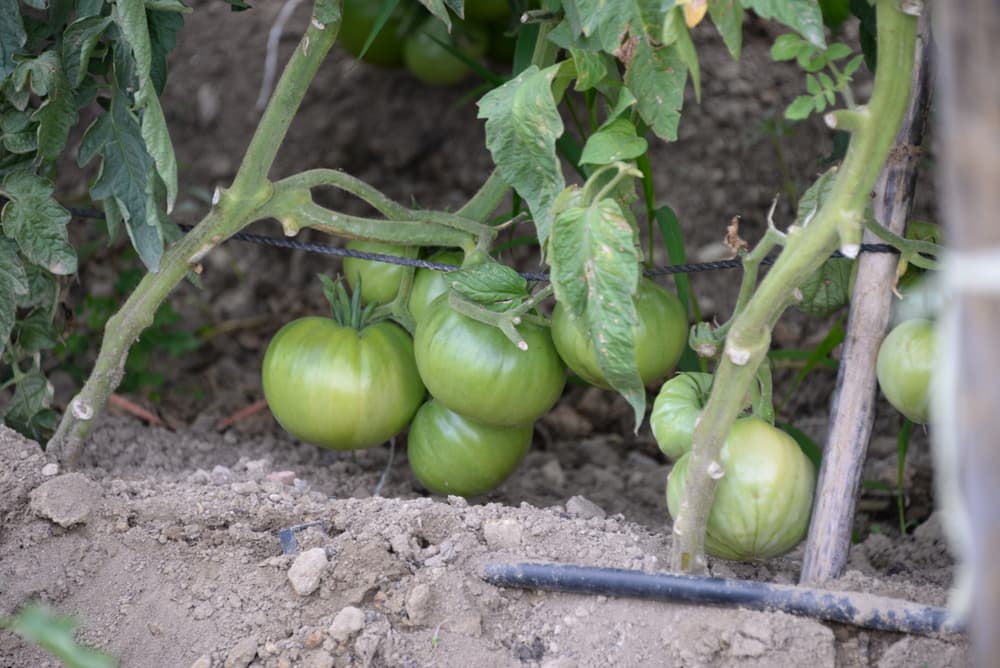
If there is other ripening fruit nearby, this will speed up the process.
Even if you are still left with some green tomatoes at the end of the season, it is worthwhile remembering that you can still use these in a range of recipes – Green tomato chutney and green tomato salsa are just two of the more common options.
